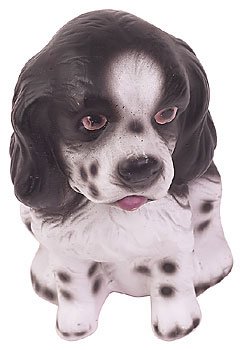February is National Pet Dental Health Month. In keeping with
this theme, here are some interesting and timely questions asked by
some of our readers:
February is National Pet Dental Health Month. In keeping with this theme, here are some interesting and timely questions asked by some of our readers:
Q: Our little Lhasa Apso is named Maggie. She has really bad breath so we took her to the vet clinic. The doctor told us that she has too many teeth and that she never lost most of her front baby teeth. He says we need to have these teeth extracted. But this means that she’ll have to have anesthesia and I’m worried about her. Do these teeth really cause that much of a problem? Do they really have to come out?
A: From your description, it sounds as though Maggie has supernumerary, or extra teeth in her mouth. This leads to crowded dentition and in many cases, some of the smaller teeth are pushed out of their normal position. There’s just not enough room for all those teeth. The overcrowding also leads to gaps where food and bacteria can accumulate. And it’s the bacteria that causes the foul smell in Maggie’s breath.
Dental problems like this really do need attention. That bacteria will also cause gingivitis and eventual loss of teeth. But once the supernumerary teeth are removed, the problem is as good as solved.
General anesthesia is required to do this. But your veterinarian should be able to discuss the relative risks. They’re small if Maggie is an otherwise healthy little girl. But here’s another suggestion for some additional peace of mind. You might consider having a pre-anesthesia blood panel run before this procedure to be sure that she is in good health inside and out. Anesthesia will be easy for here if she is healthy.
Q: Our boxer, Willis, has had some serious halitosis lately. When I looked in his mouth, I think I saw some hair wedged in between his teeth. Can this cause his bad breath? Can I treat it at home?
A: Trapped hair also traps bacteria, the number one cause of foul breath. The hair you see can occur for a number of reasons, and it can sometimes be difficult to completely remove. Oftentimes, we find even more hair wedged in the gums behind the canine and molar teeth. This hair can be very hard to see. So a trip to the vet will help Willis get back that fresh breath he had before. And your veterinarian can show you how to prevent this from happening again.
Q: Our shepherd, Minka, has a broken fang tooth. We don’t know when it happened and it doesn’t seem to bother her at all. Does she need to go to the vet for an exam? It looks so ugly and I wonder if she just isn’t showing us her pain. And I also wonder if the only treatment for this is to have her tooth pulled. What are our options?
A: No doubt this must have hurt at least a little when it happened. But dogs rarely show any outward signs of discomfort, making it difficult to recognize a problem like this when it first happens. I strongly recommend that you have Minka’s mouth examined, and find out how serious this tooth fracture really is. Here’s why.
If the fracture is into the center of the tooth (the pulp cavity) it can allow bacteria to penetrate and get into the gumline. This can have serious consequences. If the fracture is small and shallow, she may only need to have the sharp edges smoothed by your veterinarian.
But there are other options as well, even if this is a more serious fracture of that tooth. There are veterinary specialists who practice only dentistry. So if you want Minka to regain her full “smile” again, ask your vet for a referral to a specialist. You’ll be amazed at the results.
Q: I once heard that elephants have more than one set of permanent teeth in their lifetime. Is this true?
A: It’s true. Most domestic animals, like people, only get 2 sets of teeth in their lifetime. But elephants are different, not just in the number of teeth they have throughout their life, but also in how their teeth come into their mouth.Elephants undergo new dentition 6 times throughout life, but teeth aren’t exchanged from underneath as ours are. New teeth don’t push up and push out old teeth. Instead they appear in the rear of the mouth and push old teeth forward.
Newborn elephant calves are born usually with 2 small molars in both the upper and lower jaw. These teeth are the size of a thumbnail. Later on, another slightly larger molar tooth comes in and slowly moves from the back to the front and thus replaces the old tooth. This process repeats a total of 6 times and the teeth get progressively larger to where the 5th and 6th rear molars come in the size of bricks. This impressive dentition is necessary for elephants to forage on the roughage that makes up the majority of their diet.
As these teeth wear down in older elephants, their ability to adequately chew food diminishes. They seek softer vegetation usually around waterways or swamps. But eventually even this vegetation becomes impossible to properly chew. Finally, when they are unable to eat well enough to survive, they succumb to weakness and undernutrition.













